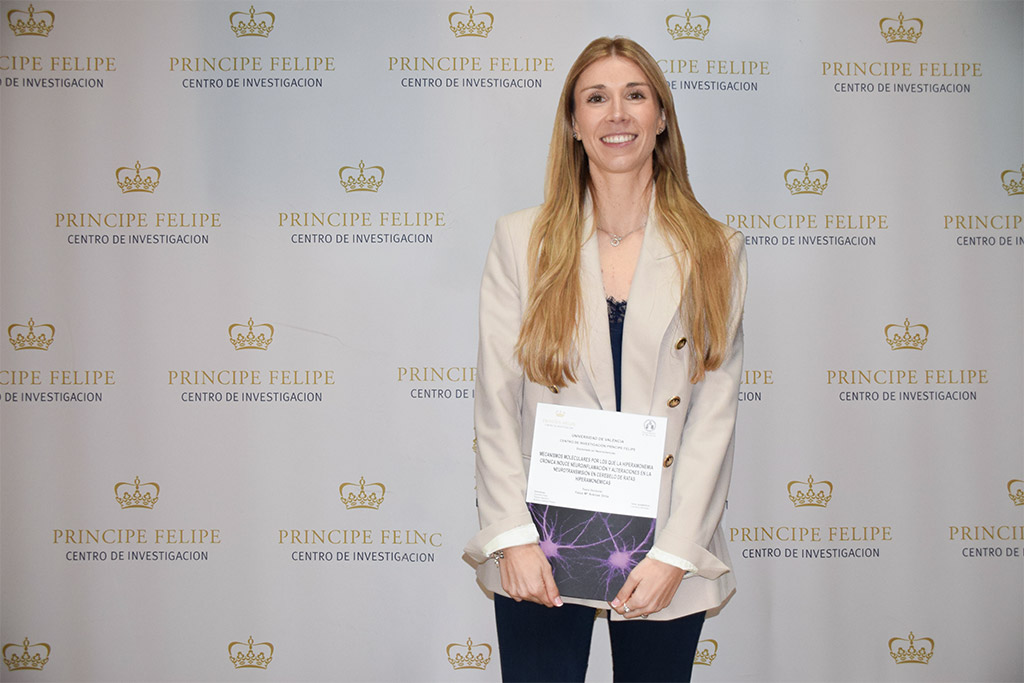Defensa de Tesis Doctoral: “Molecular mechanisms by which chronic hyperammonemia induces neuroinflammation and alterations in neurotransmission in the cerebellum of hyperammonemic rats.”
Doctorando: Yaiza Maria Arenas Ortiz
Dirigida por: Dr. Vicente Felipo, Dra. Andrea Cabrera Pastor, Dr. Tiziano Balzano
Defensa: 12 de abril de 2022, 17:00 h
Hepatic encephalopathy (HE) is a complex neuropsychiatric syndrome that results from liver failure. Liver failure induces hyperammonemia and peripheral inflammation leading to neuroinflammation with activation of microglía and astrocytes and increased levels of pro-inflammatory cytokines. Neuroinflammation alters neurotransmission, leading to cognitive and motor impairment. Rats with chronic hyperammonemia reproduce the cognitive and motor deficits exhibited by patients with minimal hepatic encephalopathy (MHE). In both patients and animal models, the cerebellum appears to be the first area of the brain affected at early stages of MHE. The main objective of this thesis was to identify molecular mechanisms and signal transduction pathways by which chronic hyperammonemia induces neuroinflammation and how this alters neurotransmission in the cerebellum of hyperammonemic rats without liver failure.
In the first chapter, we show that glycinergic neurotransmission modulates neuroinflammation. In hyperammonemic rats, enhanced glycinergic neurotransmission leads to reduced membrane expression of ADAM17, resulting in increased surface expression and activation of TNFR1, of the associated pathway and of NF-κB. This leads to increased expression in Purkinje neurons of TNFα, IL-1b, HMGB1 and glutaminase. This altered neurotransmission leads to motor incoordination. Reducing glycine receptors activation with strychnine or extracellular cGMP normalizes the above pathway in hyperammonemic rats. In the second chapter, we show that sustained (but not short term) hyperammonemia induces TNFα expression in Purkinje neurons, which would be due to TNFR1 activation by TNFα produced in glia which would induce nuclear translocation of NF-κB and TNFα mRNA transcription. Induction of TNFα in Purkinje neurons would alter their function and contribute to altered neurotransmission and neurological impairment. TNFα is also induced in Purkinje neurons of patients died with liver cirrhosis, which would contribute to the loss of Purkinje cells in these patients. In the third chapter, we show that chronic hyperammonemia enhances the activation of S1PR2 by increasing its membrane surface expression. This leads to increased CCL2 levels, especially in Purkinje neurons. CCL2 released by neurons activates CCR2 in microglia, leading to microglia activation and increased membrane expression of P2X4R and content of BDNF, which activates TrkB in Purkinje neurons, leading to increased membrane expression of KCC2. This in turn enhances both GABAergic and glycinergic neurotransmission, which is responsible for motor incoordination in hyperammonemic rats. In conclusion we show that blocking glycine receptor or using R7050 or S1PR2 antagonists have beneficial effects to reduce glial activation and neuroinflammation and improve inhibitory neurotransmission in cerebellum and motor incoordination in chronic hyperammonemia and, likely, in patients with liver cirrhosis and MHE.





